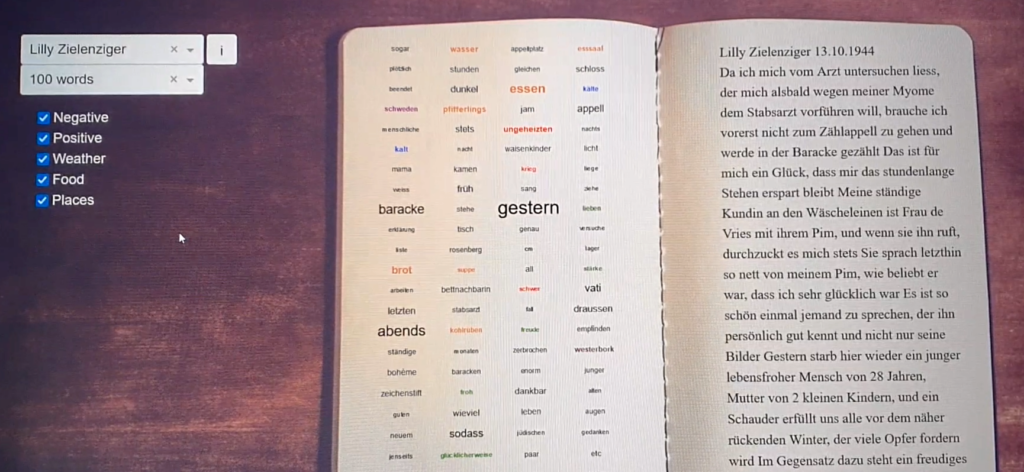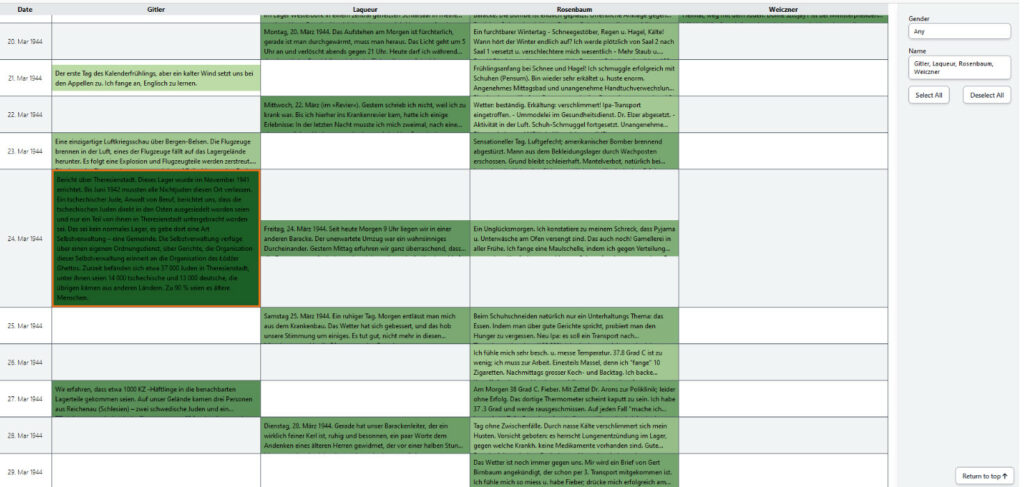After Richard Khulusi spent a long time analyzing and visualizing a dozen of diaries written in the Bergen-Belsen concentration camp [1], MSc data science student Danielle Roed Tagaki chose to work with the same diary corpus in her visualization course and later in her Master’s project.
Visualization project: The goal of the visualization is to provide easy access to a better understanding of life in the concentration camps as an alternative to reading entire diaries. Similar work has been done to develop visual tools for historians and other researchers to explore the content of the diaries in more detail, but this work is primarily aimed at users who are not very familiar with the subject. The tool consists of a word cloud that allows to color words according to a set of selected topics, and close reading of paragraphs containing words of interest.

Master’s project: The goal of this work was to develop a prototype for an application that allows users to compare diaries written by prisoners in concentration camps. The application displays the diaries in a calendar view where each entry can be colored based on its similarity to a selected entry of interest. Similarity scoring is based on pre-trained fastText document embeddings scaled by TF-IDF. The work complements the article “Exploring Life in Concentration Camps through a Visual Analysis of Prisoners’ Diaries” [1], which visualized the same diaries in a different format. The thesis also includes a brief discussion of the trade-off between quantitative representations of data and respectful treatment of the testimonies of real people.

The MEMORISE team thanks Danielle for her engagement in the project, congratulates to a successful graduation and wishes her all the best for her future career!
References:
[1] Khulusi, R., Billib, S., & Jänicke, S. (2022). Exploring life in concentration camps through a visual analysis of prisoners’ diaries. Information, 13(2), 54.
Author: Stefan Jänicke



No responses yet